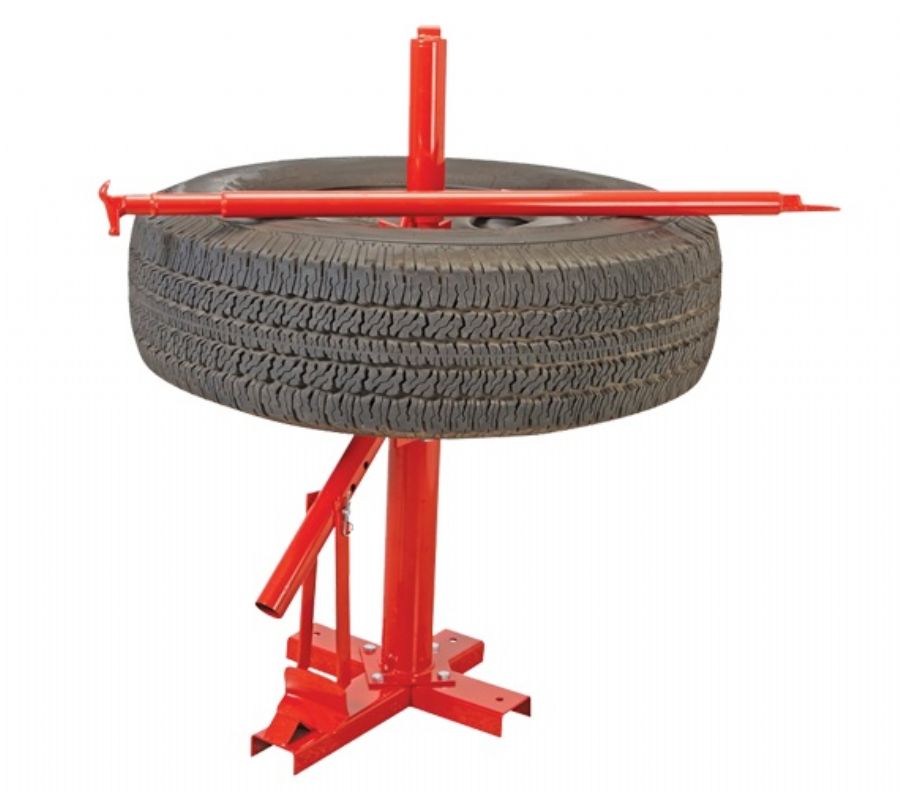Saved Items
Edit Your Profile
F-093-X
The Firestone Farm Data Book outlines mounting, inflating and demounting guidelines for agricultural tires. This information is found in the General Farm Tire Information, Warnings and Safety Precautions section in the Data Book and can also be found online here.
Tire changing can be dangerous and should be done by trained personnel using proper tools and procedures. Before servicing tires, always read and understand any manufacturer's warning contained in the customer's literature or molded into the tire sidewall. Farm tires to be mounted on single piece wheels are covered by the following Rubber Manufacturers Association Safety Warning:
Inspect both sides of the tire to be sure the beads are evenly seated.
If tire is mounted on a machine that does not have a positive lock-down device to hold the wheel, inflation should be done in a safety cage or other restraining device.
If both beads are not properly seated when pressure reaches 35 psi, completely deflate the assembly, reposition the tire and/or tube on the rim, relubricate (both tire and rim) and reinflate.
Inflating beyond 35 psi air pressure when trying to seat beads is a DANGEROUS PRACTICE that may break a tire bead (or even the rim) with explosive force, possibly resulting in serious injury or death.
Always lubricate tires/rims using only approved tire mounting lubricant or mild vegetable oil soap solution. Never use antifreeze, silicones or petroleum-base lubricants. This will damage the tire.
The use of any flammable material during tire servicing is absolutely prohibited. Use of starting fluid, ether, gasoline or any other flammable material to lubricate, seal or seat the beads of a tubeless tire can cause the tire to explode or can cause the explosive separation of the tire/rim assembly, resulting in serious injury or death.
Once the beads have been seated, inflate the tire to the manufacturer's recommended cold inflation pressure for the tire's intended service. This operating pressure may be above or below the seating pressure. Consult the Load & Inflation Tables in the Firestone Farm Tire Data Book for the correct pressure.
Having a profile lets you save preferred tires, technology, services and dealerships. Enjoy access to exclusive offers and easy login to all Bridgestone Commercial websites.
Create a Profile
Get the most of out of this visit to Bridgestone Commercial by signing in now.
Password
Forgot Your Password
Recipient Email Address
Press "Enter/Return" or "Space" key to validate your email. Only valid emails can be added. You can share with multiple people.
Subject
Message
Optional
Send a copy to sender's email address
This site uses cookies to enhance your user experience. By continuing to browse our website, you agree to use these cookies. For more information on what cookies we use and how to manage these cookies please visit our Privacy policy
By continuing to browse our website, you agree to use these cookies. For more information on what cookies we use and how to manage these cookies please visit our Privacy policy
OK
Tires are prone to going flat over time. In most cases, all you have to do is pump the tire with air. however, sometimes the tire bead will come off the rim. To fill up your tire again, you’ll have to seat it on the rim.
A tire bead is the inner edge of the tire that is fitted to the rim when the tire is inflated. When it comes loose, the tire deflates and your tractor becomes a burden. Below, you’ll find out how to seat a tire bead on a regular lawn more or a garden tractor.
There are two main methods for reseating a tire bead. The first one involves the use of fire. I wouldn’t recommend this method for smaller tires or inexperienced individuals. The next method involves increasing the pressure using an air compressor and a rope or string.
The next method involves increasing the pressure using an air compressor and a rope or string.
I don’t recommend using this method because of how dangerous the outcomes could be. This mainly works for larger tires, try not to take the risk with smaller ones.
All you’ll need to use is starter fluid and a way to set it on fire. You’re going to spray the fluid in the gap between the tire bead and the rim then ignite it. The pressure from the fire will bounce the bead back into place.
After making sure that the fires are out, proceed to fill your tire with air before it deflates. Be careful the air emanating from the tire is really hot! When inflating the tire, don’t exceed the PSI limit. You’ll find the maximum PSI written on the side of the tire.
Should you choose to go through with this method, you should take great care. Keep a fire extinguisher nearby for any emergencies.
This method requires some muscle power. The smaller the tire you’re handling the less power you’ll need to carry out these steps.
The smaller the tire you’re handling the less power you’ll need to carry out these steps.
https://www.youtube.com/watch?v=5mfJIOkvVRMVideo can’t be loaded because JavaScript is disabled: How To Seat The Beads on a New Riding Lawn Mower Tractor Tire (https://www.youtube.com/watch?v=5mfJIOkvVRM)
You’re going to need something to tie around the length of the tire. It should be elastic enough to be able to tie it and sturdy enough to handle the tire’s pressure. You have several options.
Take your rope, or whatever you chose to use, and run it along the length of the tire, making sure it’s centered. If it’s not centered, the rope could slip off when you’re pumping air into the tire.
You don’t need to tie the rope very tightly, you’ll do that in the next step.
Grab a screwdriver or any metal appliance that resembles it. Wedge it under the knot you just made and twist it. That will make the rope tight over the tire, and increase the pressure inside.
Wedge it under the knot you just made and twist it. That will make the rope tight over the tire, and increase the pressure inside.
You may struggle a little bit with this step. The first twist is always the hardest one. If you get it done, then the rest of the work will be a walk in the park.
This step is optional but still recommended. Removing the valve stems will allow the air to flow easily with no restrictions.
When you’re not limited by anything when filling the tire with air, it makes it much quicker to do so.
Fill the tire with air until the tire bead is pushed outwards and seated on the rim. Don’t over-inflate it, you’re still applying pressure to the tire.
The valve stem will prevent the pressure from escaping the tire. If pressure does escape, the tire bead will loosen around the rims again. You don’t want to go through all of that again, do you?
Now that there’s no external pressure being applied, you can fill the tire to the maximum PSI level, and you’re done!
Overfilling the tire with pressure could cause it to burst.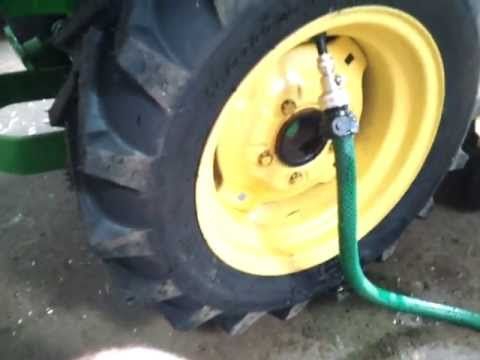 You should know the maximum PSI of your tire beforehand and fill your tire accordingly. If you’re unlucky enough, you’ll get in the way of the exploding tire which could cause severe injuries and sometimes death.
You should know the maximum PSI of your tire beforehand and fill your tire accordingly. If you’re unlucky enough, you’ll get in the way of the exploding tire which could cause severe injuries and sometimes death.
So be really careful when adding pressure to your tire.
Each method has its time and place. It all just depends on the tire you have and the situation you’re facing.
If you’re dealing with one of the tractor’s bigger tires and can’t easily use the wrap around the circumference method, go for the fire method. With bigger tires, it’ll be hard to tie a rope around it, especially if you’re working alone.
Squashed tires and the explosive method go hand in hand. Because there’s no pressure in the tire, you won’t be able to wrap the rope around the tire. So you’ll have to turn to the other method.
Contrary to the fire method, this method is perfect for small, more manageable tires. Assuming you only have limited space to fix your tire, you should go for this method. It doesn’t require much space and won’t set your garage on fire.
Assuming you only have limited space to fix your tire, you should go for this method. It doesn’t require much space and won’t set your garage on fire.
It’s best for cases where the gap between the tire bead and the rim is narrow. This indicates that there’s pressure inside, which you’ll need for this to work.
If the tire bead or the related cords are cut or damaged then the wheel is shot and cannot be repaired. In this case, you need to purchase and replace the damaged tire. There is no way to make a damaged tire bead airtight again.
How do you know if your tire is losing air abnormally? A normal tire will lose about 1-3 PSI a month, so if you’re losing more than that you should get it checked.
There are four reasons behind the loss of air.
Air condenses in cool weather and expands in warm weather. You probably know this from your chemistry classes. In wintertime, your car will detect lower PSI inside the tire.
You probably know this from your chemistry classes. In wintertime, your car will detect lower PSI inside the tire.
When you start driving the PSI will increase as you begin to heat the air particles inside the tire. This will keep happening for about 10 minutes, the air will then stop expanding.
Again, your chemistry class. Naturally, the air wants to escape the tire because of the high concentration there. It wants to be let out into the vast world outside the tire. Thus, any chance the air will get to escape, you’ll find your tire losing its pressure.
There could be a problem with the valves inside the wheels which release more air than they should. These deteriorate through the years due to weather conditions or bumpy roads.
Another problem with the wheels is that they could be bent or damaged. When part of the wheel is bent, the tire won’t be fitted tightly around the wheel, causing pressure to escape through the ill-fitted parts.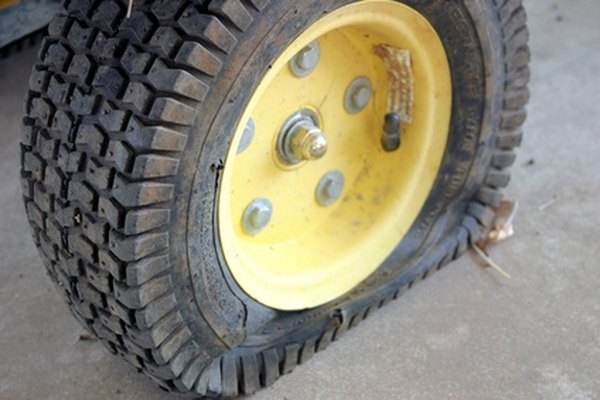
We get tire damage because the roads aren’t as clean as we’d like to think they are. Sometimes, a loose nail or other sharp objects may slash the tires. Small tears will be enough to cause the tire to lose air slowly.
If there is any damage done to the beads, air could escape from the small opening between the bead and the rim.
The bead doesn’t even need to be damaged, it could just loosen around the rim and still cause the tire to lose air. We’ll tell you how to bounce it back in position.
Good luck trying to steer a car with only a steering wheel. Similar to how our body and mind work in sync, the steering wheel, and tires do too.
Tires aren’t in sync only with the steering wheel, but also with the engine. They translate the engine’s power into movement.
The pressure inside them makes them keep the vehicles moving and support their weight. If it wasn’t for its bouncy quality, tires wouldn’t have held up the vehicle or absorbed shocks on the road while driving.
It’s fascinating how one small aspect of a vehicle can make a huge difference to it.
You may be wondering ‘why would I repair the tire myself?’. Well, do you really want to go through the trouble of taking the tire to a mechanic? A small tractor tire could easily be repaired in your own garage.
For larger tires, you should weigh out the advantages and disadvantages of going to a mechanic or using the fire method. If you’re a natural handyman with some experience, fixing your tire may be your best option. It’ll save you some money, and time. After you fix the tire, your garden tractor will be up and running right away.
I can’t stress enough the importance of safety precautions when dealing with the tires yourself, especially if you choose to work with flammable fluid. Don’t work alone, always have someone there with you in case something goes wrong.
Another season of changing shoes is approaching.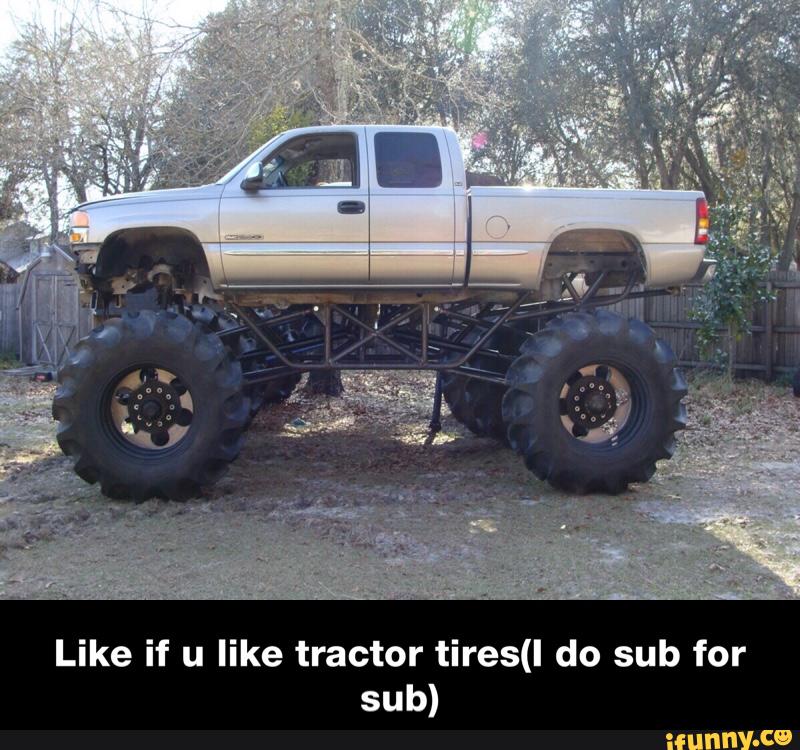 And you may remember that on one of the tires after the last winter/summer there is a jamb - a small bump. I don’t want to run to the store for the sake of one new tire. We understand. Or maybe it looks even better if repaired?
And you may remember that on one of the tires after the last winter/summer there is a jamb - a small bump. I don’t want to run to the store for the sake of one new tire. We understand. Or maybe it looks even better if repaired?
Yes, not every wheel that has met with a nail, rebar sticking out of the ground or a sharp stone on the road is considered damaged. Everything, of course, depends on the scale of the damage and its location on the tire itself. Some are easily repaired, while others are simply impossible to do - the tire can only be sent to the trash.
A bulge on a wheel, referred to by drivers as a bump or bulge, is the most common tire sidewall defect. It appears due to a collision with an obstacle or after falling into a pit, more often at high speed. The threads of the sidewall carcass are easily damaged by impact, and the tire at this point can no longer hold the load and air pressure - swelling appears. A small bump sooner or later turns into a big one, and driving with such a defect is dangerous - the wheel can shoot at any moment.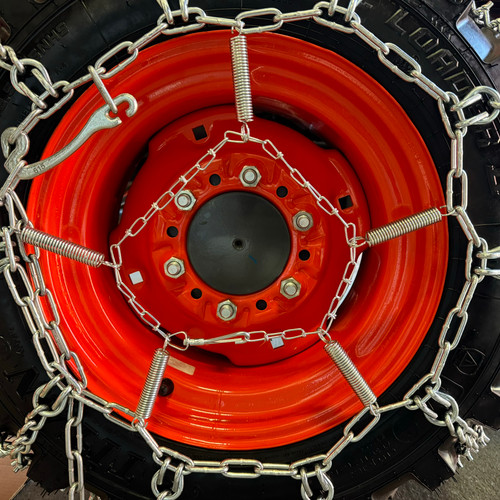 At high speed, this is fraught with loss of control, departure from the road and a rollover.
At high speed, this is fraught with loss of control, departure from the road and a rollover.
The quality of roads in Kazakhstan contributes to the appearance of bulges on tires
Some types of bulges are repairable, although this is a temporary measure. Not a single patch can restore the factory rigidity. Ideally, change the tire.
Special cord patches can extend the life of a tire with a herniation, even if the swelling has appeared on the tread. The sidewall is a different story. If the swelling appeared at a distance of more than 40 mm from the side, it can be repaired. If not, then the wheel needs to be replaced. Blisters on low profile tires are most often non-repairable.
For maximum safety when riding with a repaired bump, insert the tube. This is an inexpensive and reliable solution. On our market, you can find cameras made in China and Russia, the latter are slightly more expensive, but also of better quality.
The elimination of a side cut is a serious operation, therefore, as in the case of a bump, you will have to go to the professionals.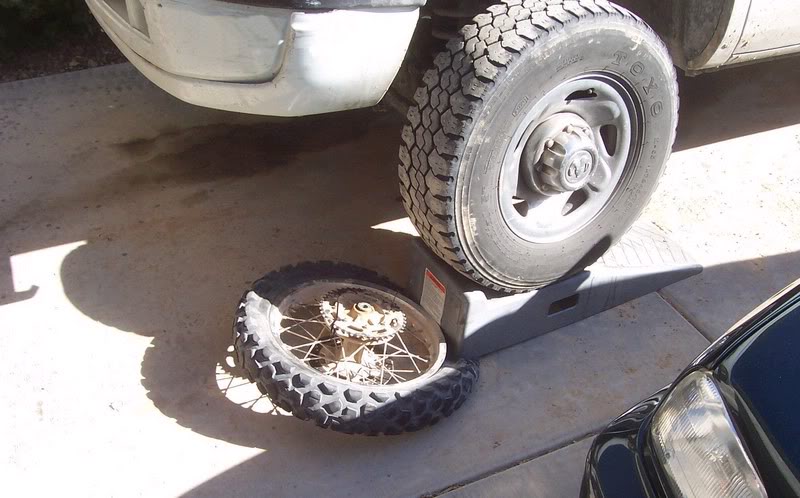 We need cord patches, fortunately in our time they are of different sizes and with a different number of layers. And if you do it wisely, then you can't do without special tools and vulcanization.
We need cord patches, fortunately in our time they are of different sizes and with a different number of layers. And if you do it wisely, then you can't do without special tools and vulcanization.
A cut, by the way, cannot be healed in all cases. If the gap is in the shoulder area of the tire, it is unlikely that anyone will undertake to repair it, since no guarantees can be given here. However, our Kulibins take on even the most difficult cases, cutting out parts of the sidewalls from the tires and even weaving the cord on their own.
Tire overhaul. We would not put such a wheel on ourselves
Low profile tires can be repaired, but more difficult. A tear in the sidewall is easier to seal on tires with a medium or high profile.
Sometimes a cut is confused with a pluck. This is when the outer layer of the sidewall caught on something sharp, a tear formed, but the frame itself remained intact. There is nothing wrong with that, although the drivers at the tire fitting company successfully repair the cut, for which they take it accordingly.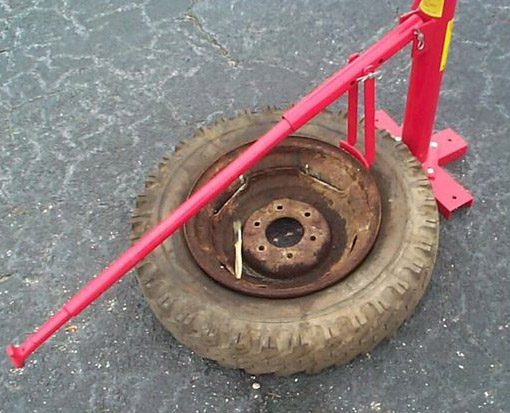
If a piece of rubber remains on the sidewall, then glue it with ordinary superglue (101st). If it came off, then it is better to cover it with raw rubber and vulcanize. Leaving the pluck bare is not recommended, because the tire carcass, often consisting of a metal cord, will quickly corrode.
In Europe, defective or used tires are perforated before being sent for scrap to prevent their resale and possible operation. But they don’t know that we have such holes on the sidewall patched once or twice
Cuts and hernias are not the only possible damage to the side of the tire. You can also spoil the side ring, in the process of changing shoes, for example. If it’s for garlic, then such a tire is already dangerous. Sooner or later, the tire pressure and the load in motion will start to squeeze the rubber off the rim - a wheel explosion can occur.
This ailment is repaired if the wire ring - the base - is intact.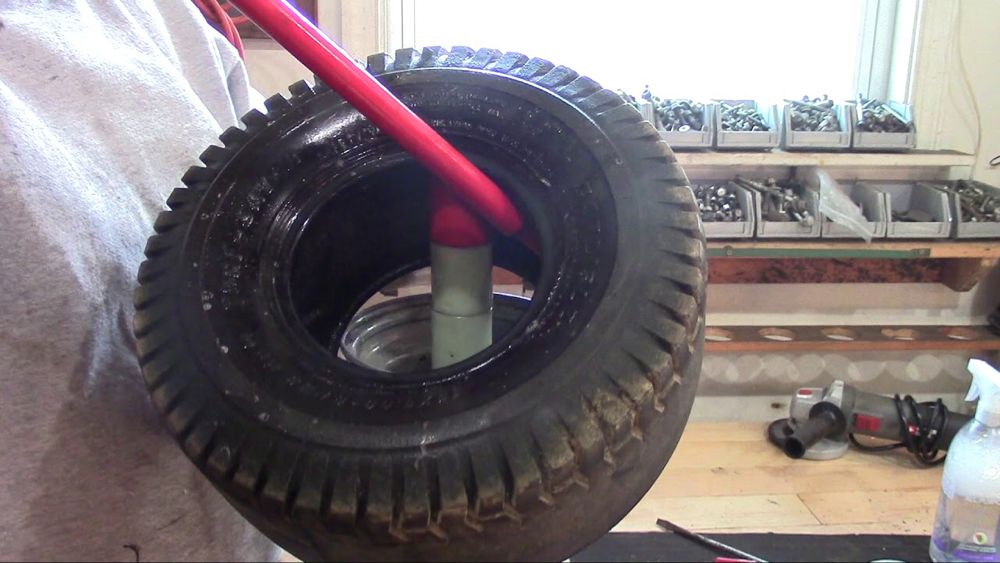 There are no special technologies and materials to correct this particular problem, but most often craftsmen use a two-component composition for chemical (also called cold) vulcanization. After mixing, the mass is pressed into a fat-free damage. Compound manufacturers recommend waiting 72 hours before mounting a tire. Of course, our masters do not pay attention to this condition - they put the tire right away. And it’s good if the wheel is flat because of this at night in the parking lot, and not on the road.
There are no special technologies and materials to correct this particular problem, but most often craftsmen use a two-component composition for chemical (also called cold) vulcanization. After mixing, the mass is pressed into a fat-free damage. Compound manufacturers recommend waiting 72 hours before mounting a tire. Of course, our masters do not pay attention to this condition - they put the tire right away. And it’s good if the wheel is flat because of this at night in the parking lot, and not on the road.
If the side ring tears are barely noticeable, but the wheel still deflates, then you can use a special liquid - a bead seal designed to seal a tubeless tire.
These seals have been used in motorsport for some time. In particular, in the American Formula D Drift Series, drivers used compounds to keep the tire on the rim even with minimal tire pressure. Now they are banned.
Pay attention to the left rear wheel of the Nissan Silvia S13. Due to too low pressure, it was literally taken off the disk under load
Every schoolchild has faced this problem when patching the inner tube of his bike after hitting something sharp.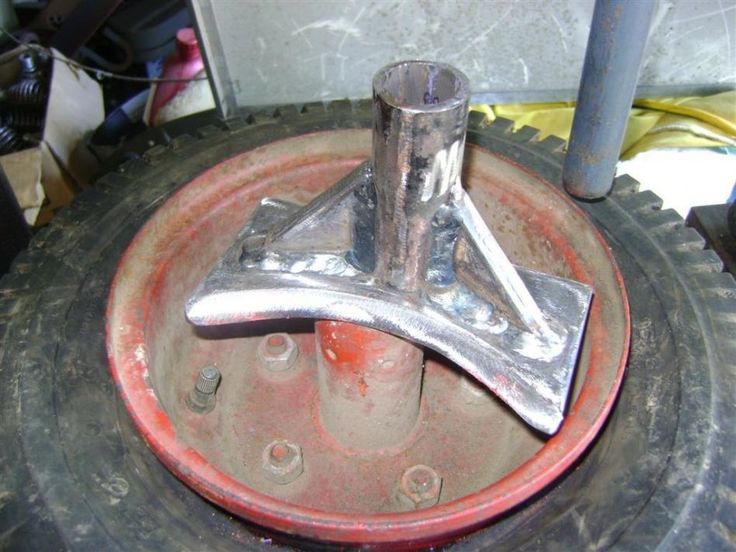 Repairing a car tire puncture with your own hands will also not be difficult even on the road. But for this you will need a pump (or compressor) and a universal tire repair kit with harnesses. All this is sold at any car market or gas station.
Repairing a car tire puncture with your own hands will also not be difficult even on the road. But for this you will need a pump (or compressor) and a universal tire repair kit with harnesses. All this is sold at any car market or gas station.
Repairing a tire on the side of the road with harnesses
The process is simple. If we are talking about the front wheels, then in most cases the wheel can not even be removed, it is enough to turn the steering wheel in the right direction, find the puncture site and carry out repairs. First, the hole is cleaned with a helical awl from the set. The tourniquet itself is smeared with glue and tucked into the eye of the awl, after which it is inserted into the tire hole. With a sharp movement, the tool is removed, and the tourniquet remains in place and clogs the hole. The tails are cut with a knife, but not at the root, it is recommended to leave about 20 mm. The tire is inflated and checked.
Sometimes a nail or self-tapping screw clogs the hole by itself, remaining in it.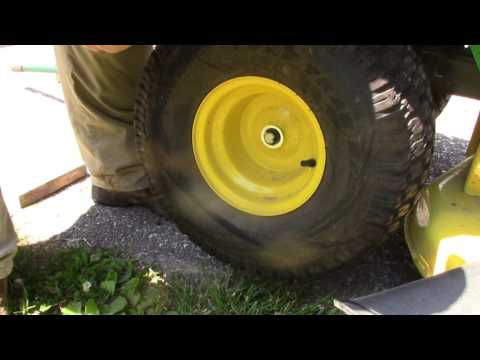 If you see a hat in a tread, do not rush to pull it out. While the pressure is holding, move to vulcanize. And sometimes they drive with a screw in a tire for weeks.
If you see a hat in a tread, do not rush to pull it out. While the pressure is holding, move to vulcanize. And sometimes they drive with a screw in a tire for weeks.
Repair of a puncture at a tire shop
Punctures are also repaired with harnesses at a specialized service, although among professionals such repairs are not considered long-term. After a few months, the flagella dry out and can let air through. There are more advanced methods like cold and hot vulcanization. The latter is more reliable. In this case, the hole is sealed with an elastic patch, and the funnel from a foreign object is filled with a special compound. After that, a vulcanizer is put on the tire, it heats up the rubber and solders it.
In addition to the plaster, the puncture is also repaired with special cord fungi. Craftsmen process the puncture site: drill it and treat the surface with a tool to roughen it. Then the repair area is lubricated with glue (it is also called cement) and a fungus is introduced. This is done from the inside of the tire. The cap of the fungus is rolled, and the excess legs are simply cut off from the outside.
This is done from the inside of the tire. The cap of the fungus is rolled, and the excess legs are simply cut off from the outside.
Puncture repair with sealant
With the advent of tubeless wheels, and later run flat tires, many automakers began to abandon spare wheels. Instead, repair kits with compressors are supplied with the machines. A repair kit is essentially a bottle of pressurized sealant. Later, such spray cans began to appear on the shelves of ordinary car dealerships.
This method has not taken root in the CIS, because the condition of the roads makes it necessary to have at least a stowaway in the kit, but it can also be considered as a method of repair on the road.
The car must be jacked up and sealant must be pumped into the damaged wheel through the nipple. Next, you should spin the wheel, then pump it up, lower the car and drive a few hundred meters. If the tire tightness has not been restored, repeat the procedure.
If the tire tightness has not been restored, repeat the procedure.
For commercial vehicles, cutting the tread with a special device (regrower) is a common thing. Moreover, such tire retreading is provided by the factory (marked REGROOVABLE on the sidewall) to increase the service life. But there are entrepreneurs who undertake to deepen the grooves in tires for passenger cars. But they are not intended for such an operation. Often used tires for sale are “refreshed” in this way. Be careful!
What is the threat?
The worst option is that the retreaded tire will shoot out on the road, as the master can damage the undertread layer when deepening the grooves. Such a tire will not be able to hold pressure at some point. There will be a boom! At best, the tire will indeed last a little longer, but is the game worth the candle? We think it's not worth it.
How is cutting made?
A regrower is used to cut the tread. Roughly speaking, this is a large soldering iron with interchangeable tips of various shapes. It goes through rubber like a knife through butter.
Roughly speaking, this is a large soldering iron with interchangeable tips of various shapes. It goes through rubber like a knife through butter.
If the tire is for passenger cars, then it is worth taking on a regrower only in one case - when part of the tread pattern was welded with "new" rubber during repair. This is where threading comes in handy in order to restore the grooves and symmetry of the tread.
Vehicle operation is prohibited if:
- tires have a residual tread height of less than 1.6 mm;
- tires have punctures, cuts, ruptures that expose the cord, as well as delamination of the carcass, delamination of the tread and sidewall;
- tires in size or load capacity do not match the car model;
- tires of various sizes, designs (radial, diagonal, chamber, tubeless), models, with different tread patterns, winter and summer, studded and non-studded, new and restored, are installed on one axle of the car;
- Tires retreaded according to the second repair class are installed on the front axle.
What is a second class repair?
This is the case when the carcass of the tire is restored after serious damage. A side cut (or tear) is a serious damage to the tire carcass.
11:23:02 - 11/29/2022
Farmers, industrial managers or suppliers often wonder which agricultural tires are better to buy: radial or diagonal. Each tire type has strengths and functional limitations. Consider the advantages of using each type of tractor rubber.
In the picture: The arrangement of the threads of the diagonal and radial tires.
In diagonal tires, the cord is laid at an angle to the rolling direction of the wheel. The supporting frame consists of polymer or textile threads, an even number of layers are laid in mutually intersecting directions. This technology ensures the same rigidity of all parts of the tire: tread, sidewalls, shoulder areas.
In radial tires, the cord is made from steel and nylon threads. Cord threads are located perpendicular to the direction of movement of the vehicle. The threads go from bead to bead of the tire at a right angle, the reinforcement is laid in one layer. The part of the tire in contact with the roadway is necessarily reinforced with an additional cord belt - a breaker.
Pictured: Cross sectional and radial tire.
Let's just say:
diagonal tires for agricultural machinery and tractors are heavily reinforced everywhere, and radial tires - only where it is especially needed. Result: A tire with a single ply steel cord is 5% lighter than a similar product with multiple layers of synthetic reinforcement.

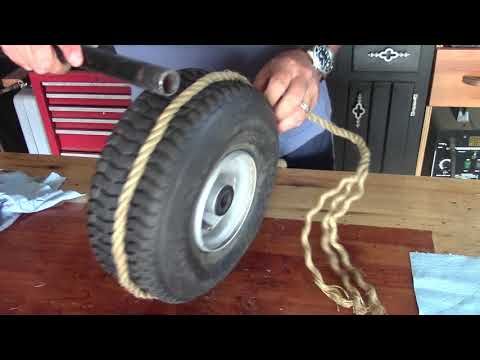 Therefore, on such tires it is allowed to accelerate no faster than 40 km / h. Thinner and more solid radial tires do not have this problem: the sidewall works as a single unit. Thanks to this advantage, radial tires are allowed to operate at speeds up to 65 km / h.
Therefore, on such tires it is allowed to accelerate no faster than 40 km / h. Thinner and more solid radial tires do not have this problem: the sidewall works as a single unit. Thanks to this advantage, radial tires are allowed to operate at speeds up to 65 km / h. Pictured: Contact patch for diagonal and radial tyres.
Bias tires have their advantages. These products have a lower cost than analogues with a radial cord structure, since they are easier to manufacture. Also, these tires are more resistant to sidewall damage.